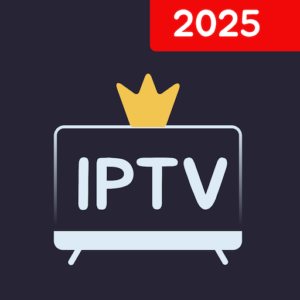In a rapidly evolving digital media landscape, IPTV (Internet Protocol Television) stands out as a transformative technology for delivering high-quality, on-demand content. In the United States, where consumer preferences are shifting from traditional cable to internet-based services, the best IPTV service is now defined not just by its channel lineup but by a host of technical, operational, and user-focused criteria. Let’s dive deeper into the world of IPTV in the USA.
1. Understanding IPTV and Its Evolution
What is IPTV?
IPTV transmits TV content over the internet using standard IP protocols. Unlike traditional broadcast, IPTV converts content into digital signals that can be streamed directly to any internet-enabled device. This evolution began with the increasing availability of high-speed internet and improved streaming protocols like HLS (HTTP Live Streaming) and MPEG-DASH, which ensure smooth and adaptive playback under varying network conditions.
The Transition from Cable to IPTV:
Historical Shift: Cable and satellite TV have long dominated American households. However, with the rise of smart TVs, mobile devices, and faster broadband, consumers have pivoted toward on-demand, internet-based content delivery.
Technological Advances: The advent of adaptive bitrate streaming, which adjusts video quality based on available bandwidth, is a key driver behind IPTV’s growth. This ensures minimal buffering and high-definition quality even during peak usage times.
2. Key Features of the Best IPTV Service in the USA
A. Extensive Channel Lineup and On-Demand Libraries
Diverse Content: Top IPTV services offer thousands of channels, spanning sports, news, movies, and international programming. In addition, robust on-demand libraries let viewers access their favorite shows anytime.
Niche Programming: Services increasingly cater to niche audiences, from indie films to region-specific news channels, broadening the appeal beyond mainstream entertainment.
B. Superior Streaming Quality and Reliability
High-Definition and 4K Streaming: Cutting-edge services deliver content in HD and 4K, ensuring that viewers enjoy crisp visuals and vibrant colors.
Minimal Latency and Adaptive Streaming: Thanks to advanced protocols like HLS and MPEG-DASH, the service adjusts in real-time to network conditions, providing uninterrupted viewing experiences.
Redundancy and Server Distribution: Leading providers use geographically distributed servers and content delivery networks (CDNs) to minimize latency and avoid congestion.
C. User-Centric Interface and Device Compatibility
Multi-Platform Support: The best IPTV platforms are designed to work seamlessly across smart TVs, smartphones, tablets, and streaming devices like Roku, Amazon Fire TV, and Apple TV.
Intuitive User Interface: A clean, user-friendly interface with easy navigation, content recommendations, and integrated search features enhances the viewing experience.
Remote Control and Voice Commands: Integration with smart home systems and voice assistants (such as Alexa or Google Assistant) is becoming increasingly popular for hands-free navigation.
D. Flexible Subscription Models and Pricing
No Long-Term Contracts: Most leading providers offer monthly subscriptions with no binding contracts, allowing users to cancel anytime.
Tiered Packages: Options range from basic packages with essential channels to premium tiers that include exclusive content, international channels, and advanced features.
Cost Efficiency: In comparison to traditional cable packages, IPTV services are competitively priced, making them attractive for budget-conscious consumers.
3. Technical Insights and Security Considerations
A. Streaming Protocols and Compression Techniques
Adaptive Bitrate Streaming: This method dynamically adjusts the video quality based on internet speed, reducing buffering. It has been a game changer for ensuring consistent performance.
Data Compression: Advanced codecs like H.265 (HEVC) and VP9 reduce bandwidth usage without compromising video quality. This efficiency is particularly crucial for delivering 4K content.
B. Network Infrastructure and Content Delivery
Content Delivery Networks (CDNs): By distributing servers across various regions, IPTV providers reduce load times and improve reliability, even during high-traffic periods.
Latency Reduction Techniques: The implementation of edge servers closer to end-users minimizes delays, ensuring a smooth streaming experience even for live sports and events.
C. Security and Legal Considerations
Encryption and Secure Streaming: The best IPTV services employ robust encryption methods to protect content and user data. Digital rights management (DRM) technologies ensure that only authorized users access premium content.
Compliance and Licensing: To operate legally in the USA, IPTV providers must secure proper licensing agreements with content creators and networks. Consumers should verify that their provider complies with local regulations to avoid potential service disruptions.
4. User Experience: Reviews and Industry Trends
A. Customer Support and Service Reliability
24/7 Customer Service: A responsive support team available via live chat, email, or phone is essential to resolve technical issues quickly.
Service Uptime: High uptime percentages (often above 99%) and minimal downtime during maintenance are critical markers of service reliability.
B. Market Trends and Consumer Preferences
Rise in Cord-Cutting: With more households opting to cut the cord, the IPTV market in the USA is growing rapidly. Consumers are increasingly seeking services that offer flexibility and a broad range of content without the overhead of traditional cable subscriptions.
Integration with Smart Home Technology: As homes become more connected, the integration of IPTV with smart devices is evolving, providing users with customized viewing experiences based on their preferences.
C. Reviews and Comparative Analysis
User Testimonials: Many users cite the ease of use, affordability, and superior streaming quality as major advantages of IPTV services. Forums and review sites consistently highlight positive user experiences, particularly regarding channel diversity and customer support.
Comparative Metrics: Reviews often compare channel availability, streaming quality, and price points. This comparative analysis helps prospective customers identify which provider aligns best with their viewing habits and budget.
5. Future Directions and Innovations
A. Enhanced Personalization and AI Integration
Content Recommendations: Machine learning algorithms analyze viewing habits to offer personalized content suggestions, much like popular video streaming services.
Voice and Gesture Controls: Future interfaces may incorporate advanced voice recognition and gesture control, making navigation even more intuitive.
B. Expansion of Interactive Features
Live Interaction: Some IPTV platforms are experimenting with interactive features, such as live polls, real-time chats during sports events, and even multi-angle viewing options.
Virtual Reality (VR) Integration: As VR technology matures, immersive viewing experiences—especially for live sports and concerts—could become a part of the IPTV offering.
C. Broader Network Expansion and Global Reach
International Content: Providers are increasingly including channels and on-demand content from across the globe, reflecting the diverse demographic makeup of the USA.
Partnerships with Content Creators: Collaborations with major networks and independent content creators are expected to expand, ensuring that the content library remains fresh and relevant.
Conclusion
The best IPTV service in the USA is much more than a substitute for traditional cable—it’s a comprehensive, technologically advanced platform that offers a blend of flexibility, quality, and innovation. From its robust technical backbone and user-friendly interface to its commitment to legal compliance and security, IPTV is setting new standards for how Americans consume entertainment. As technology continues to evolve, these services are poised to offer even more personalized and interactive experiences, cementing their place as the future of television.
With ongoing innovations and a customer-first approach, choosing an IPTV service today means embracing a more dynamic, on-demand world of television that truly caters to the modern viewer’s needs.
This detailed exploration brings together technical insights, user experience reviews, and future innovations—offering a comprehensive guide for anyone considering the best IPTV service in the USA.


